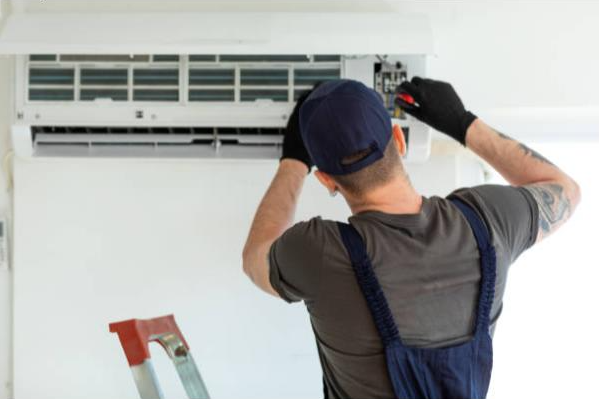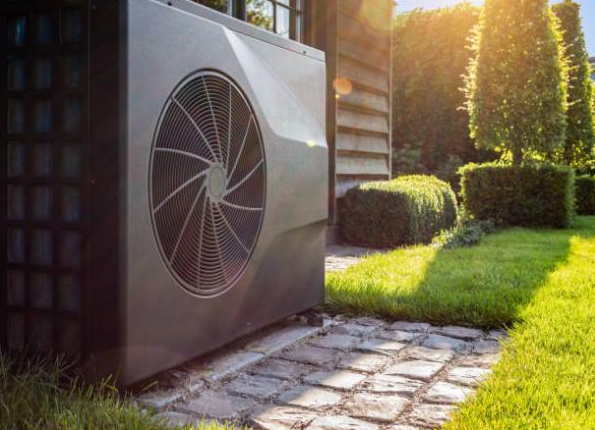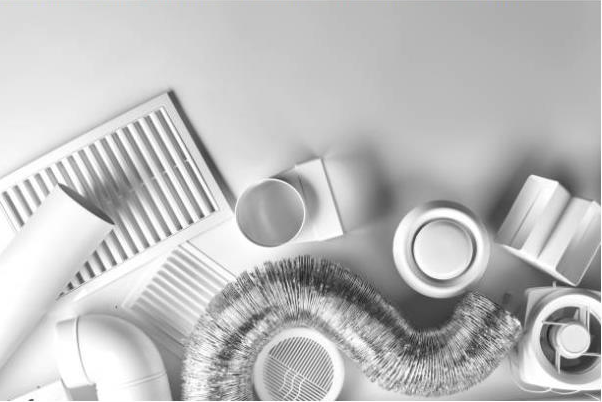Air vents keep buildings' air clean, but dust, dirt, and mold may clog them and endanger your health. Refreshing and cleaning your home's air vents is easy and may improve air quality and circulation. This post covers house cleaning vents step-by-step and freshening tips to make your home healthier.

Evaluate the State of Your Vents
Check your air vents before cleaning. Check vents for mold, dust, or strange odors. With this preliminary assessment, you can determine how much cleaning is needed and whether expert help is needed.
Assemble the materials needed
Here are some essential things you'll need to clean your air vents effectively:
- Drill or screwdriver (to remove vent covers)
- vacuum cleaner equipped with a brush
- Duster or microfiber cloth
- vinegar solution or a mild detergent
- Towels that are dry and clean
- Disinfectant spray, optional, to get rid of germs and smells
Turn off AC:
Stop dust from flying over your house by turning off your HVAC system before cleaning. Always prioritize safety.
Remove vent covers
Use a screwdriver or drill to carefully remove vent covers from walls or floors. Secure the screws to avoid losing them. Avoid confusion by treating each vent individually if your home has numerous.
Vent Cleanup
Remove the vent covers and use a vacuum cleaner attachment with a brush to clean the vents and duct openings of loose dust and dirt. Dust-prone areas should be thoroughly examined.
Dust off the vent covers
Move the vent covers outdoors or to a well-ventilated location, and use a vinegar solution or light detergent to thoroughly clean them. Scrub away filth and grime using a gentle brush or microfiber cloth. Before reattaching, give them a thorough air drying and clean water rinse.
Clean Up the Encircling Areas
Use this time to clean down the nearby walls or floors with a moist cloth to eliminate any collected dust or grime while the vent covers are drying.

Check for Mold
This is the moment to take care of any mold that you found during the first examination. To thoroughly clean the impacted areas, use a professional mold cleaner or a vinegar and water combination. For safety, be sure you wear a mask and gloves.
Refresh Yourself
Consider adding some extra freshness to the vents and their surroundings after they've been cleaned and dried by misting them lightly with disinfectant spray or using a natural air freshener. By doing this, you may help get rid of any germs and persistent smells, leaving your house feeling fresh and clean.
Reattach the vent covers
Once dry and fresh, securely reinstall the vent covers with the screws you saved. Ensure they are level and aligned properly for optimal ventilation.
Change Air Filters Often
Change your HVAC air filters regularly and clean the vents. Dirty filters may obstruct airflow, recirculating pollutants and dust throughout your home. Replace disposable filters every one to three months, depending on usage. Clean and replace reusable filters per manufacturer's instructions.
Think About Expert Duct Cleaning
Although DIY vent cleaning works well for basic upkeep, you should schedule professional duct cleaning every few years, particularly if you see recurring problems like mold development, heavy dust accumulation, or musty smells. Better indoor air quality is encouraged by professional duct cleaners' use of specialized equipment to completely clean and remove impurities from ducts.
Buy air purifiers
Buy HEPA-filtered portable air purifiers to enhance air quality. These devices remove allergens, airborne contaminants, and viruses from clean vents and HVAC systems.
Cracks & Leaks in Seals
Look for any leaks or breaks in your ductwork that can be letting conditioned air leave or letting pollutants in. To guarantee that your HVAC system runs smoothly, plug any gaps using foil tape or mastic sealer.
Maintain Proper Ventilation
Maintaining interior air quality requires ventilation. Ventilate kitchens, laundry rooms, and bathrooms to eliminate moisture and odors. Consider exhaust fans or frequent window openings for fresh air.
Check humidity
Air moisture may cause mold and indoor air quality issues. Monitor house humidity with a hygrometer and use air conditioners or dehumidifiers in humid weather.
Green Cleanup
House and vent cleaners should be eco-friendly and non-toxic. Vinegar, baking soda, and hydrogen peroxide clean inside without chemicals.
Maintain Frequently
Home maintenance should include HVAC system and air vent cleaning. Being proactive and acting quickly when anything goes wrong may help you avoid costly repairs and maintain your home's air quality year-round.
Teach Family Members
Make sure your family knows how important indoor air quality and air vent cleaning are. Promote activities like taking off shoes at the door, removing clutter, and stopping smoking inside to reduce indoor pollution.
Stay Current
Stay current on indoor air quality technology and home health tips. By following industry developments, you may improve your home's air quality and protect your family's health.
Monitor pet dander
Dog owners should check air vents for dander and shedding. Dander that enters your home's HVAC system may be reduced by brushing and vacuuming pet hair regularly.
Look Over the Insulation Near Vents
Look for indications of wear or damage on the insulation around your air vents. In addition to reducing energy efficiency, damaged insulation may let outside contaminants into your house. To preserve the best possible insulation and air quality, replace any broken insulation.
Dust off floor registers and vents
Apart from wall and ceiling vents, clean floor registers and vents regularly. Dust, pet hair, and debris may build up in these areas, damaging your HVAC system and air quality.
Use Efficient Vacuum Filters

Purchase high-efficiency vacuum filters to catch more dust and allergens while cleaning. HEPA filters, which capture microscopic particles, may improve indoor air quality.
Turn over mattresses and furnishings
The accumulation of dust and debris under and behind beds and furniture may lower the quality of air near floor vents. To avoid dust accumulation and maintain adequate circulation near air vents, rotate and clean these items on a regular basis.
Check your CO detectors
Home maintenance should include testing carbon monoxide detectors to ensure they work. Carbon monoxide detectors must be near vents and sleeping quarters since these systems might leak and create serious health problems.
Check for pests
Nests and droppings in air vents indicate bug infestations. Through vents, rats, insects, and other pests may damage your home and spread illnesses and allergies. Call pest control professionals and shut any entrance points if needed.
Improve Airflow Direction
In multi-story homes, align air vents for seasonal airflow. Vents should be adjusted to direct airflow downward for winter heating and upward for summer cooling.
Procedures for Document Maintenance
Keep a record of your air vent cleaning and maintenance, including supplies, dates, and issues. This documentation lets you monitor maintenance schedules and identify patterns or persistent difficulties.
Conclusion
To maintain air quality and comfort, we must clean and maintain our air vents regularly. How to clean and refresh house vents to reduce dust, allergies, and other pollutants. If you smell or see mold that won't go away, seek expert help to protect your family. Fresh air from clean vents may improve household health.




